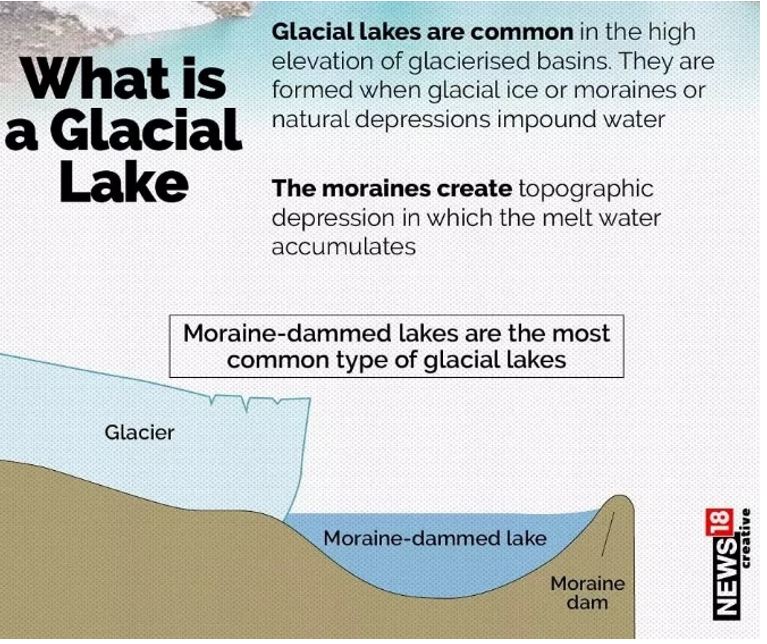

27th November 2024 (17 Topics)
Context
The National Green Tribunal has issued notice to the Centre and others in a matter regarding the rapid expansion of the Himalayan glacial lakes, raising concerns over the increasing risk of natural disasters.
What’s the issue?
- The main issue revolves around the rapid expansion of Himalayan glacial lakes caused by the melting of glaciers due to the rising global temperatures.
- The expansion of these glacial lakes poses a major environmental and disaster risk, particularly the potential for glacial lake outburst floods (GLOFs).
- These are floods that occur when a glacial lake dam (often made of ice or debris) suddenly fails, releasing massive amounts of water downstream and causing floods, landslides, and damage to infrastructure.
Key details about the issue:
- Increase in Glacial Lakes: A report shows that the surface area of glacial lakes in India has increased by 33.7% from 2011 to 2024, with 81% growth in the last 13 years alone. This growth is linked to the accelerated melting of glaciers due to climate change.
- High-Risk Lakes: The report identifies 67 glacial lakes in India that have expanded by over 40% in surface area, making them highly vulnerable to GLOFs. Regions like Ladakh, Himachal Pradesh, Uttarakhand, Sikkim, and Arunachal Pradesh are particularly affected.
- Potential Disasters: The expansion of these lakes significantly increases the risk of glacial lake outburst floods (GLOFs), which can be catastrophic for downstream communities, infrastructure, and biodiversity. These floods have the potential to destroy villages, disrupt transport networks, and cause severe environmental damage.
- Legal and Environmental Concerns: The NGT has raised concerns about potential violations of environmental laws, including the Biodiversity Act, Water (Prevention and Control of Pollution) Act, and the Environment Protection Act. The rapid growth of these lakes without adequate monitoring and management is seen as a violation of these laws.
Fact Box:Glacial Lake Outburst Flood (GLOF)
|
More Articles


